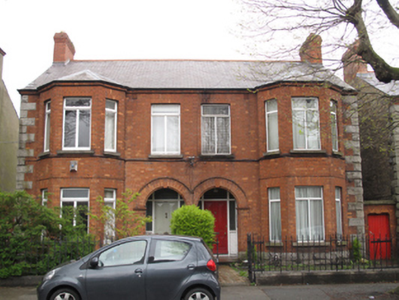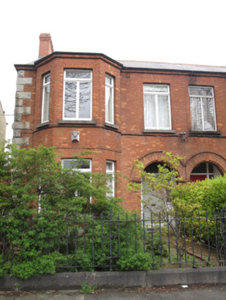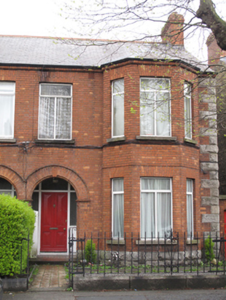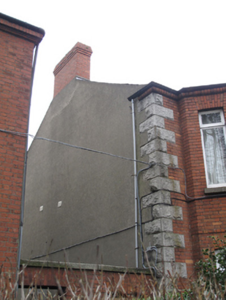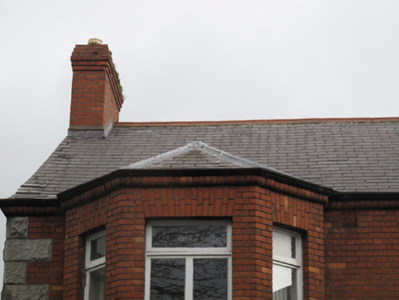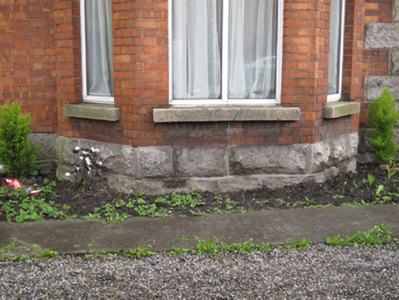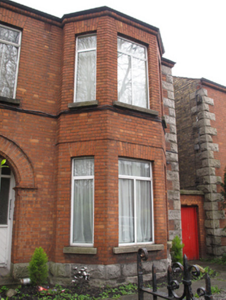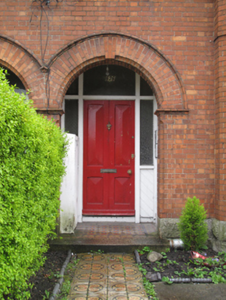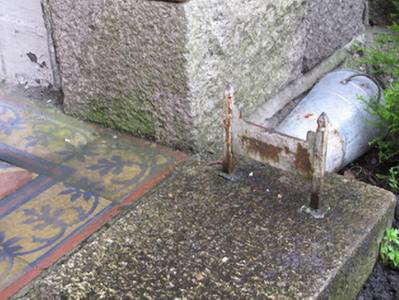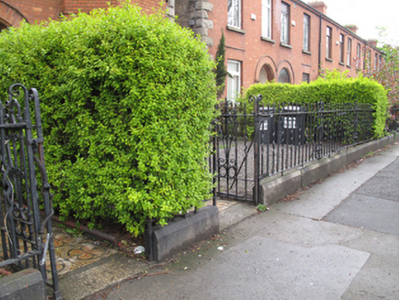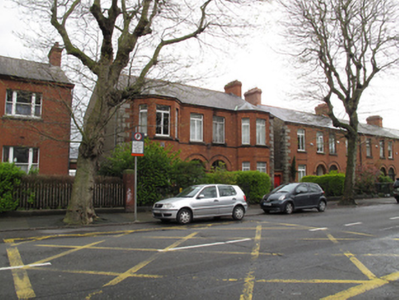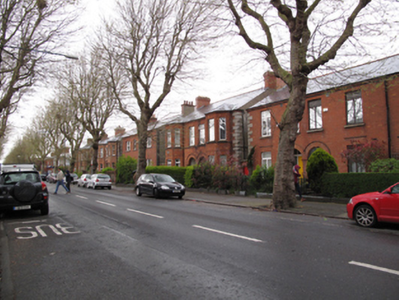Survey Data
Reg No
50080135
Previous Name
Evelinton
Original Use
House
In Use As
House
Date
1900 - 1910
Coordinates
313118, 233409
Date Recorded
08/05/2013
Date Updated
--/--/--
Description
Semi-detached pair of two-bay two-storey houses, built c.1905, each having full-height canted bay window with hipped roof to front (south) elevation and paired return to rear (north) elevation. Pitched slate roof with terracotta ridge tiles, red brick chimneystacks, cast-iron rainwater goods and moulded brick eaves course. Red brick, laid in Flemish bond, to front elevation, rusticated granite quoins, rusticated granite plinth course, rendered walls to east and west gables. Square-headed window openings with red brick voussoirs, granite sills and replacement timber and uPVC windows. Round-headed door openings to recessed porches to front, chamfered brick surrounds with dropped keystone and hood moulding. Timber panelled door with sidelights and overlights, opening onto tiled floors and granite steps having cast-iron bootscrapes, tiled pathways. Wrought-iron railings with scrolled ribbon motifs on carved granite plinth wall, having matching wrought-iron gates, to footpath.
Appraisal
These elegant houses are representative of architectural design and construction in the early years of the twentieth century. They are similar in character, form and fabric to many of the neighbouring terraces, as well as sharing a fenestration alignment and roofline, thereby making a positive contribution to the continuity of the street. Rusticated granite and moulded red brick detailing are used to good effect to subtly enliven the façade, while wrought-iron railings provide decorative interest to the streetscape. The houses are examples of the continued development of suburban residential areas outside of the city centre throughout the nineteenth and into the twentieth centuries. This terrace became known as ‘Evelinton’ by 1910 and is listed as such in Thom’s Directory of that year, having been referred to as ‘building ground’ up until 1897.

